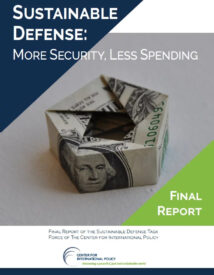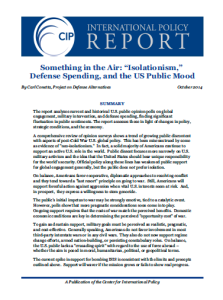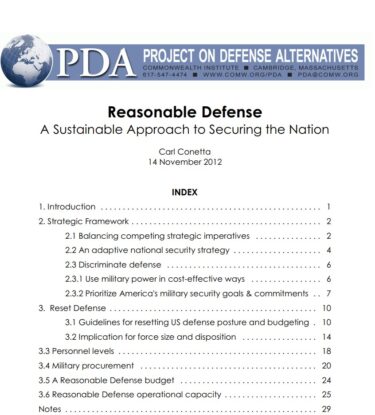Final Report of the Sustainable Defense Task Force of The Center for International Policy, June 2019. ➪ full report PDF
Carl Conetta contributed analysis of the economic and climate change challenges, details of the threat assessment, the strategy, and the calculation of savings from recommended changes to force structure.

The United States must partner with other nations in addressing challenges like climate change, epidemics of disease, nuclear proliferation, and human rights and humanitarian crises. None of these challenges are best dealt with by military force. Rather, they will depend on building non-military capacities for diplomacy, economic assistance, and scientific and cultural cooperation and exchange which have been allowed to languish in an era in which the military has been treated as the primary tool of U.S. security policy.


 Argues for a new balance among the various instruments of national power reflecting today’s strategic conditions. Taking a realistic view of security needs, the report advocates a military 20% smaller than today’s. It advances a “discriminate defense” strategy that would focus the military on cost-effective missions and save $550 billion more than official plans over the next decade.
Argues for a new balance among the various instruments of national power reflecting today’s strategic conditions. Taking a realistic view of security needs, the report advocates a military 20% smaller than today’s. It advances a “discriminate defense” strategy that would focus the military on cost-effective missions and save $550 billion more than official plans over the next decade.